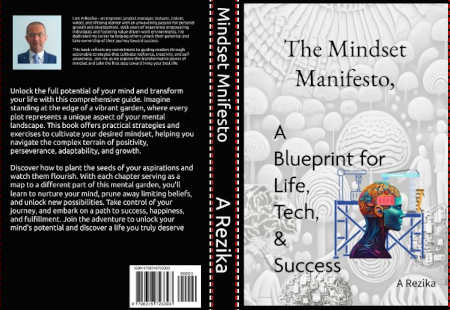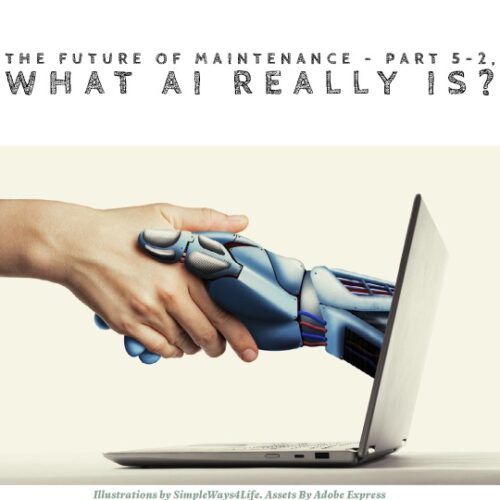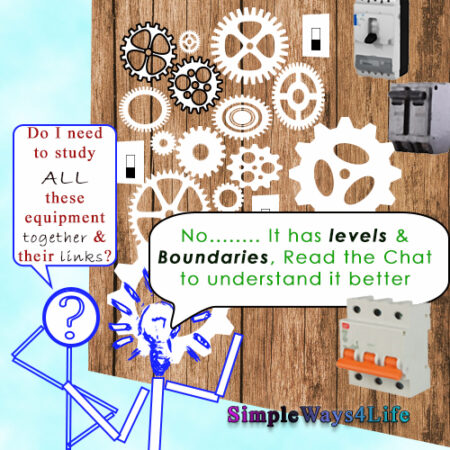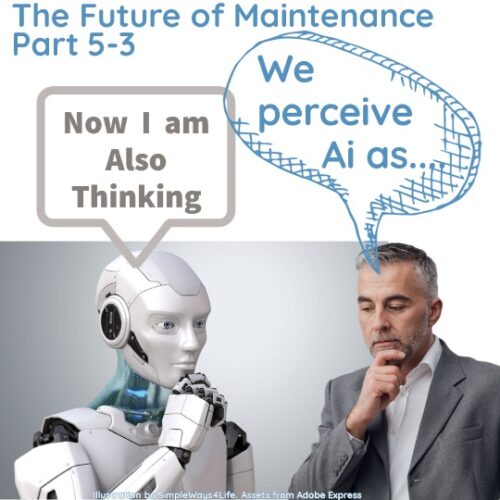Artificial Intelligence is no mystery. It is simply a machine trained to mimic human intelligence. At its core, every AI agent today is a large language model (LLM). It works by building on the text you provide. In other words, your words shape its answers.
That means you are always the boss in this relationship. AI does not truly “think.” It only generates the next best word or phrase based on your prompt. The so-called “intelligence” of AI is measured only by tests like the Turing Test—whether it can momentarily fool a human into thinking it is another human. Beyond that, it remains a powerful but limited tool.
In our previous articles, we introduced ‘PMI-style’ prompt formulas like RTF and CREATE. These formulas gave maintenance professionals structured ways to frame questions, remove ambiguity, and get sharper answers. The response showed us one thing clearly: a well-structured prompt turns AI into a far more reliable partner in daily work.

CUSTOMPRICE-TO2JAN26
Now it is time to expand the toolkit. In this article, we will look at more formulas—SMART, STAR, ABCD, and PEAR from the ‘PMI’ formulas for a successful prompt. Moreover for each one we shall explain what a specific approach it offers and how to use it for a specific maintenance situation. For each, we will link it to real maintenance scenarios, showing you exactly how to turn theory into practice.
SMART Formula: Ensuring Clear and Measurable AI Guidance
The SMART formula helps you set clear and practical objectives for AI. It ensures that every request you make is Specific, Measurable, Achievable, Relevant, and Time-bound. By following SMART, you avoid vague instructions and guide AI toward useful, reliable answers.
First, state the specific goal. Tell AI exactly what you want it to do. Next, make it measurable by defining how success will be checked. Then confirm that the task is achievable. AI should not be asked to perform actions outside its scope, such as physically repairing a pump. After that, check if the task is relevant. The output must connect to your maintenance objectives, not wander off into unrelated details. Finally, make it time-bound by adding a deadline or time frame for the solution.

CUSTOMPRICE-TO2JAN26
Consider this maintenance scenario: You want AI to generate a weekly vibration report format for rotating equipment. A vague prompt might ask, “Give me a vibration report.” But that leaves room for confusion. A SMART prompt, instead, sets clear boundaries. For example:
Prompt Example (SMART):
“Create a vibration monitoring report template for pumps and motors. The report should include sections for date, equipment ID, measurement points, vibration levels (mm/s RMS), and a summary. Keep the format suitable for weekly updates. Provide the output in a simple table format that can be reused each week.”
By applying the SMART formula, you direct AI with precision. The result is not just an answer, but a structured tool ready to support maintenance success.
STAR Formula: Structuring AI for Context and Action
The STAR formula takes a different path than SMART. While SMART focuses on defining goals, STAR focuses on structuring context and actions. It helps you guide AI step by step, from understanding the situation to delivering results.
The formula breaks into four parts. First, describe the Situation so AI knows the background. Second, state the Task that AI should handle in that context. Third, define the Action steps you want AI to take. Finally, describe the Result you expect. With this structure, AI follows a story-like path instead of only chasing measurable objectives.
Here is how it differs from SMART: SMART works best for setting goals or outputs, such as designing a report or checklist. STAR works best when you want AI to explain behavior, analyze responses, or guide decisions in real-world scenarios. SMART is goal-driven, STAR is context-driven.
Ready to transform your mindset? Click and Get your copy > Now For Sale on Simpleways.life & Amazon
Consider a maintenance interview scenario. You are preparing questions for hiring a new vibration technician. Instead of asking a vague question like, “How do you deal with pump failures?” you can use STAR to design a sharper AI-generated interview question.
Prompt Example (STAR):
“Generate a behavioral interview question using STAR. Situation: A pump shows high vibration after alignment. Task: The technician must diagnose the root cause. Action: They should explain specific diagnostic steps. Result: The answer should show how their actions restored the pump to acceptable vibration limits.”
With STAR, you guide AI to deliver structured, behavior-focused outputs. This makes it especially powerful to create a mindset for training, interviewing, and scenario-based planning in maintenance.
ABCD Formula: Shaping AI for Decisions and Outcomes
The ABCD formula focuses on decision-making and consequences. While STAR guides AI through context and action, ABCD goes deeper by linking behavior to outcomes. This makes it useful for problem-solving and scenario analysis in maintenance.
The steps are clear. First, state the Antecedent—the event or condition that sets the stage. Second, define the expected Behavior of the AI in response. Third, explain the possible Consequences of those actions. Finally, direct the Decision process you want AI to follow. By doing this, you make the AI’s reasoning more transparent and aligned with real-world thinking.
Here is the key difference: STAR is about describing and structuring behavior in a situation, often for evaluation or training. ABCD, on the other hand, is about analyzing how choices lead to consequences, making it valuable for troubleshooting and decision support.
Imagine this scenario: A production line stops because a motor overheated. You want AI to explore the problem logically. A vague prompt might say, “Why did the motor fail?” Instead, you can shape the reasoning with ABCD.
Prompt Example (ABCD):
“Use the ABCD formula to analyze a motor overheating case. Antecedent: The motor tripped after running at full load for two hours. Behavior: AI should identify likely causes such as ventilation, overloading, or bearing wear. Consequences: Explain the impact of each cause on downtime and repair costs. Decision: Recommend the most probable cause and suggest the first corrective action to take.”
With ABCD, you do not just get possible causes. You get structured reasoning, weighed outcomes, and a logical decision path that matches real maintenance thinking.
Ready to transform your mindset? Click and Get your copy > Now For Sale on Simpleways.life & Amazon
PEAR Formula: Driving Reflection and Improvement
The PEAR formula helps AI reflect on challenges and suggest improvements. Unlike SMART, STAR, or ABCD, PEAR adds a reflective layer. It does not just describe actions or decisions. Instead, it pulls from experience to recommend better practices for the future.
The steps are simple. First, define the Problem you want AI to address. Second, describe the Experience or prior knowledge AI should use as context. Third, specify the Action you want AI to outline. Finally, state the Result you expect from those actions. By combining problem-solving with reflection, PEAR becomes especially useful for project evaluations and lessons learned.
Here is the key difference: ABCD analyzes decisions in real time, focusing on consequences. PEAR, however, looks backward and forward. It links past experiences to future improvements, making it ideal for reliability reviews, post-task evaluations, and preventive strategies.
Consider this example: You want to improve lubrication practices for gearboxes. A vague prompt might be, “How do I improve gearbox lubrication?” But a PEAR-driven prompt adds structure and reflection.
Prompt Example (PEAR):
“Use the PEAR formula to evaluate lubrication practices. Problem: Gearboxes are showing early wear despite regular oil changes. Experience: Draw from best practices in predictive maintenance and contamination control. Action: Suggest specific steps to improve lubrication methods. Result: Recommend measurable improvements that extend gearbox life and reduce unplanned failures.”
With PEAR, AI provides not only a solution but also a learning loop. This makes it a powerful tool for continuous improvement in maintenance programs.

CUSTOMPRICE-TO2JAN26
Closing Summary
Prompt formulas give structure to how we use AI in maintenance. SMART sets measurable goals. STAR adds context and behavior. ABCD analyzes decisions and consequences. PEAR drives reflection and improvement. Together, they turn AI into a sharper, more reliable right hand for maintenance professionals.
In our next article, we will explore the SCARF formula. It connects AI prompting to team dynamics, motivation, and safety culture. We will also highlight practical dos and don’ts to help you avoid common pitfalls when crafting prompts.
If you feel you need help with any of these ideas we discussed, request a Management Consultancy or Coaching Services From our Store










